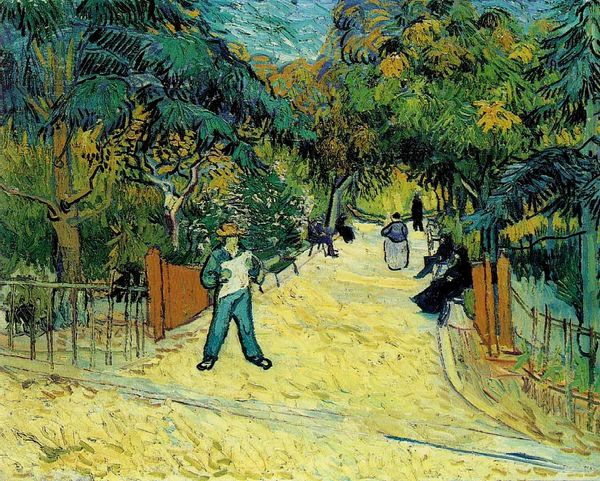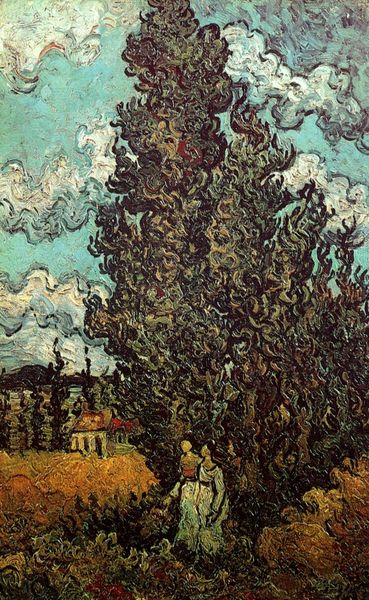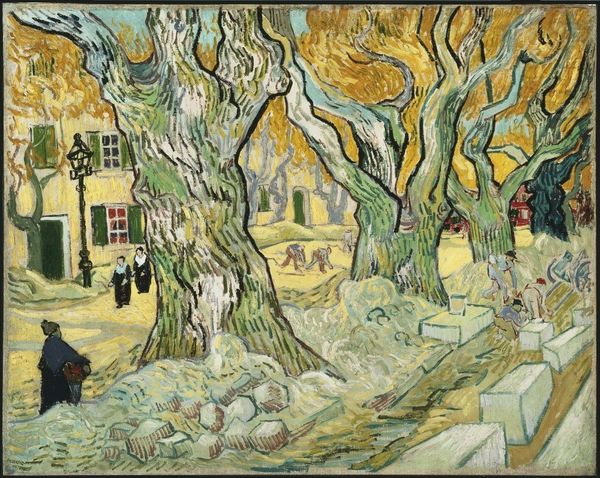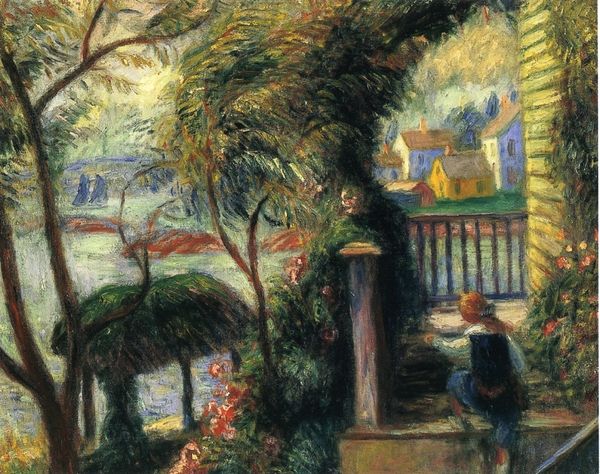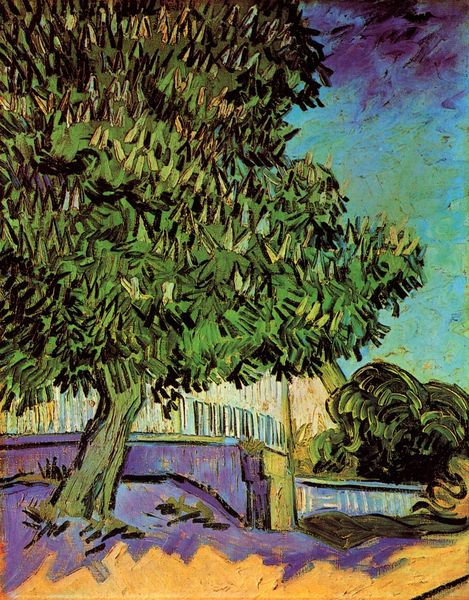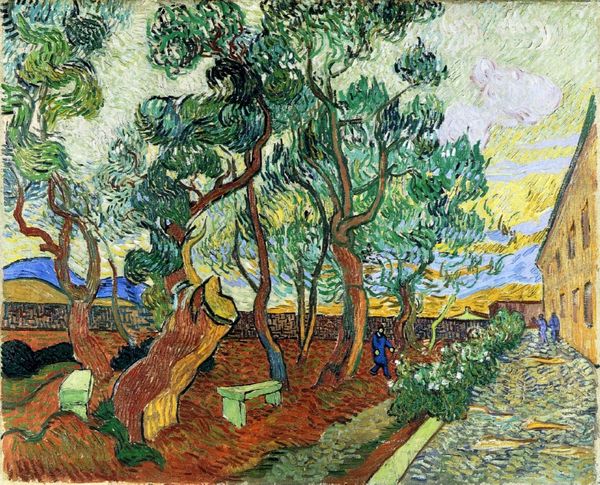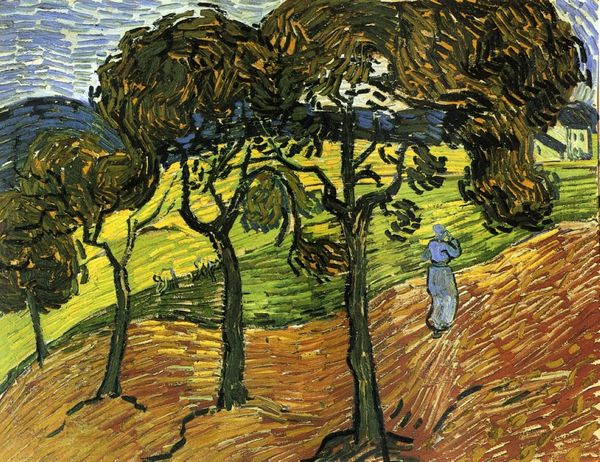
Pine Trees with Figure in the Garden of Saint-Paul Hospital 1889
0:00
0:00
painting, plein-air, oil-paint
#
portrait
#
tree
#
painting
#
impressionism
#
plein-air
#
oil-paint
#
landscape
#
impressionist landscape
#
figuration
#
cityscape
#
post-impressionism
Dimensions: 58 x 45 cm
Copyright: Public domain
Editor: Looking at Van Gogh's "Pine Trees with Figure in the Garden of Saint-Paul Hospital" from 1889, the colours feel muted, and there's this heavy presence of the pine tree. It feels like it dominates the figure, almost as though the man is shrinking away from it. What significance do you think the tree holds in this piece? Curator: The pine tree, especially the cypress, is deeply rooted in funerary symbolism. It speaks of mourning, memory, and transition. Considering Van Gogh painted this while at Saint-Paul, an asylum, the tree perhaps reflects his inner turmoil, a symbol of his psychological state. It becomes a cultural shorthand for grief and contemplation. Does the figure’s posture suggest anything to you? Editor: I guess so. He seems a bit slumped, almost defeated, with his head slightly bowed. Is he even looking at the tree, or is he simply existing within its shadow? Curator: Exactly. The positioning reinforces that idea of being overshadowed by one's inner world, doesn’t it? Think about how the thick, swirling brushstrokes create this feeling of movement around the tree, making it seem alive and almost menacing. The building behind him is orderly and rigid, but that contrasts so much with the tree. Don't you feel a sense of dissonance? Editor: I do. It's like two separate worlds clashing: the structured exterior world, represented by the hospital, and the chaotic interior world, embodied by the tree and the man. It’s like he cannot decide which world he belongs in, or if he has a world he belongs in at all. Curator: And in that, we see how Van Gogh used not just nature, but the dialogue *between* figure and nature, to paint his emotional landscape for all of us. It’s about what we project onto these natural symbols. It is so powerful because the symbolism can affect and speak to people throughout generations, right? Editor: Yes. I see that so clearly now, thinking about the man, the tree, and that building. There's definitely so much more to Van Gogh than pretty pictures. Thanks!
Comments
No comments
Be the first to comment and join the conversation on the ultimate creative platform.
